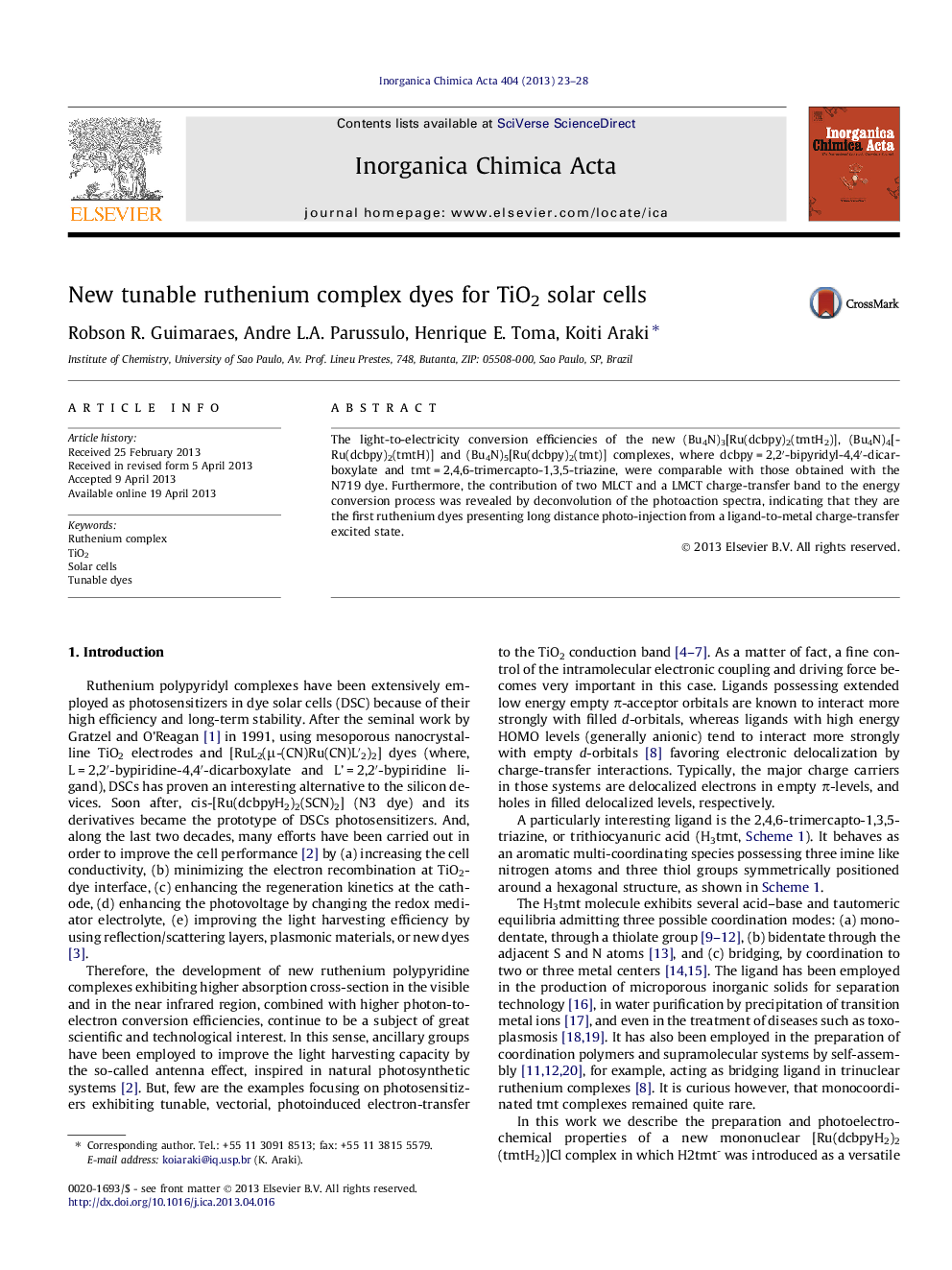| Article ID | Journal | Published Year | Pages | File Type |
|---|---|---|---|---|
| 1312298 | Inorganica Chimica Acta | 2013 | 6 Pages |
•Ruthenium dyes with photoinjection tuned by ligand protonation/deprotonation.•Novel ruthenium dyes with photoinjection from LMCT excited state.•First mononuclear ruthenium tmt complex and properties.•Ruthenium dyes with normalized efficiencies comparable to N719.•Insights on the design of new ruthenium polypyridine dyes.
The light-to-electricity conversion efficiencies of the new (Bu4N)3[Ru(dcbpy)2(tmtH2)], (Bu4N)4[Ru(dcbpy)2(tmtH)] and (Bu4N)5[Ru(dcbpy)2(tmt)] complexes, where dcbpy = 2,2′-bipyridyl-4,4′-dicarboxylate and tmt = 2,4,6-trimercapto-1,3,5-triazine, were comparable with those obtained with the N719 dye. Furthermore, the contribution of two MLCT and a LMCT charge-transfer band to the energy conversion process was revealed by deconvolution of the photoaction spectra, indicating that they are the first ruthenium dyes presenting long distance photo-injection from a ligand-to-metal charge-transfer excited state.
Graphical abstractRuthenium complex dyes, whose photoinduced electron injection take place from MLCT and LMCT excited states and can be tuned by protonation/deprotonation of a bidentated trimercaptotriazine ligand, were isolated as solids, characterized and used for the preparation of solar cells. The surface concentration normalized conversion efficiencies were comparable with N719.Figure optionsDownload full-size imageDownload as PowerPoint slide
